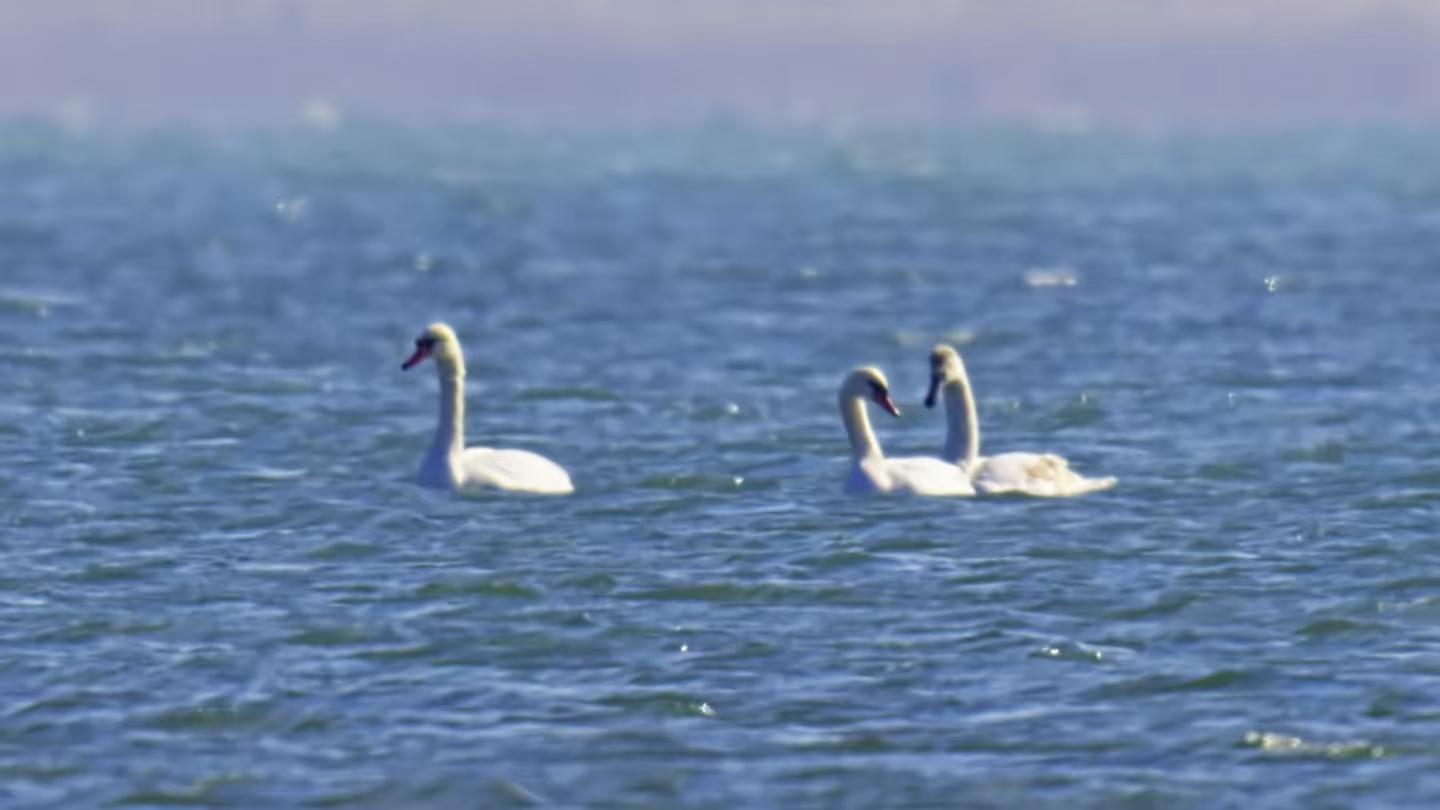A family of three mute swans appeared in Tongzhou Bay
By Peng Junjun
In the past few days, Nantong bird lovers shared their posts: took photos of mute swans in Tongzhou Bay waters. On the early morning of 15th December, staff from Jiangsu Nantong Environmental Monitoring Center once again captured the scene of swans playing in the water through surveillance.
As early as 7th December, Jiangsu Nantong Environmental Monitoring Center found the National Class II Key Protected Wild Bird, the ‘King of waterfowl’ —— mute swan in Yaosha reservoir in Tongzhou Bay for the first time. After checking with the Bird Watching Record Center, Jiangsu has only recorded it in Lianyungang in the past two years. There had been no record in Nantong for more than 10 years.
Data shows that the mute swan is a National Class II Key Protected Wild Animal. Although it is the most numerous species of wild swans, it is the least numerous species in China. It has a relatively large size and was named because of the wart-like protrusion on its forehead. Mute swans have strict requirements for the quality of the living environment. They usually live in waters with wide water surface, little human interference, good water quality and abundant food. As its weight is close to the maximum weight for birds to fly, it is called the ‘King of waterfowl’.

【背景阅读】
疣鼻天鹅“一家三口”现身通州湾
连日来,南通的爱鸟人士纷纷晒出朋友圈:在通州湾水域拍到疣鼻天鹅。12月15日一早,江苏省南通环境监测中心工作人员再次通过监控,拍摄到天鹅戏水的画面。
早在本月7日,江苏省南通环境监测中心通过监控,首次在通州湾腰沙水塘中发现国家二级重点保护野生鸟类“游禽之王”——疣鼻天鹅。经查询观鸟记录中心,江苏近两年仅在连云港有过记录,南通十多年未曾记录到。
资料显示,疣鼻天鹅是国家二级保护野生动物,虽是野生天鹅中数量最多的种类,但在我国却是数量最少的一种。其体型较大,因前额有一块瘤疣的突起而得名。疣鼻天鹅对生存环境质量要求苛刻,通常选择水面宽阔、人为干扰少、水质好、食物丰富的水域栖息。因体重已接近鸟类飞行重量极限,因此被称为“游禽之王”。
作者:彭军君